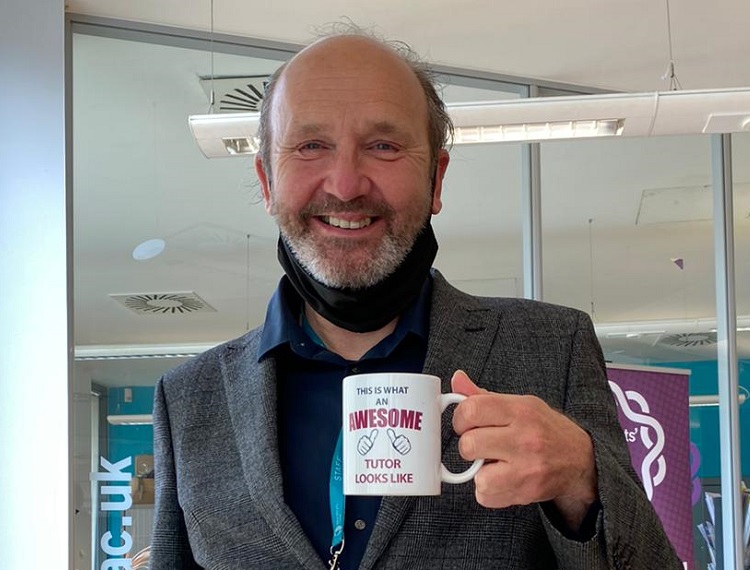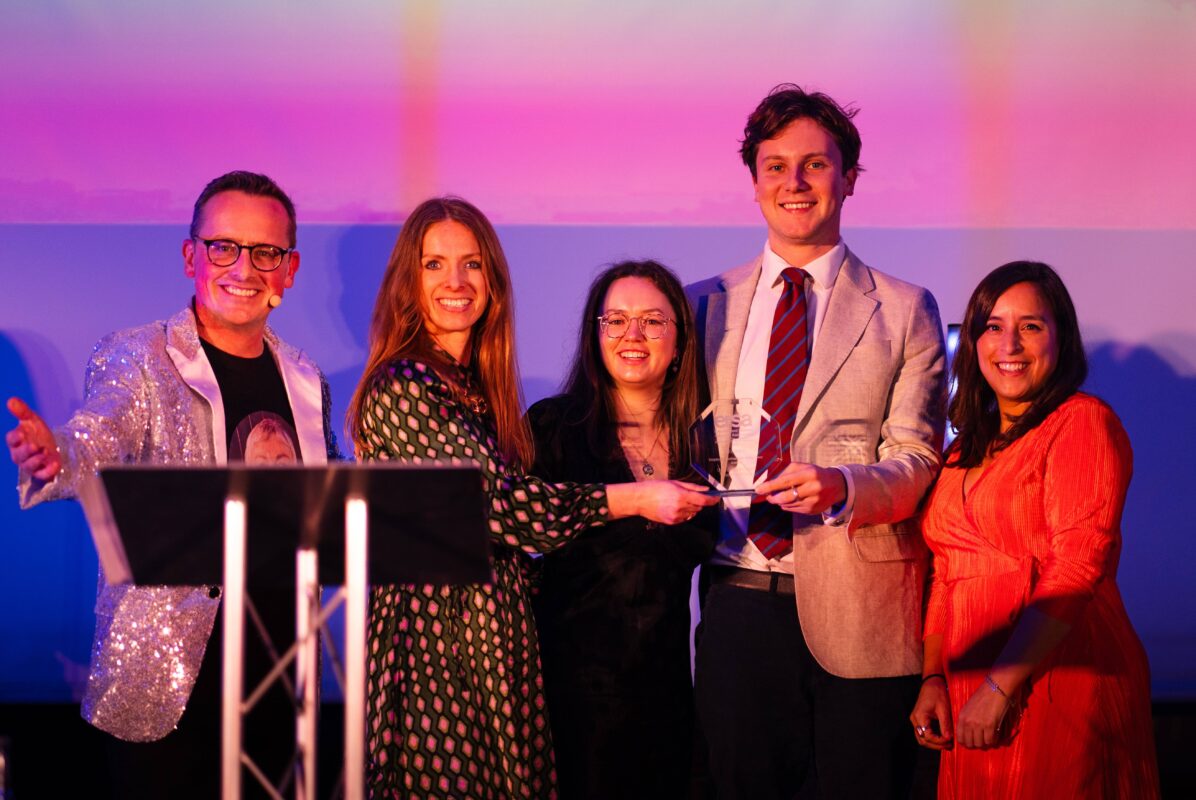It is from FE that we might generate new voices, alternate narratives and lived experiences that shape contemporary society

Red plagues, dust storms and death to utopia
Miranda:
I pitied thee,
Took pains to make thee speak, taught thee each hour
One thing or other: when thou didst not, savage,
Know thine own meaning, but wouldst gabble like
A thing most brutish, I endowed thy purposes
With words that made them known. But thy vile race,
Though thou didst learn, had that in ’t which good natures
Could not abide to be with; therefore wast thou
Deservedly confined into this rock,
Who hadst deserved more than a prison.
Caliban:
You taught me language, and my profit on ’t
Is, I know how to curse. The red plague rid you
For learning me your language! (l.2:358–70)
Encased in this short exchange between the privileged and the dispossessed is the howl of a frustration that echoes across four hundred years.
Reverberating injustice, the subjugation of minoritarian voices in favour of the force-fed language of the powerful, continues to characterize contemporary Further Education (FE) landscapes.
Exiled on an island that they colonize, brutalize and where they subsequently enslave the existing residents, the crux of Prospero and Miranda’s power lies in mysticism, fantastical books and tyrannical power.
Punished by being denied the fruits of his own labours, Caliban signifies how oppression relies on ridicule and mockery of, and false charity to, those it strips of agency.
Whatever relief from toxic imperial cruelty emerges comes only from a tarnished education meted out from a pitying condescension of the same imperial class.
Caliban might easily fit the popular image of a brutal outsider set against with the cultivated beauty and nobility of those that enslave him.
As he curses, he reveals more, that his magnificence andwisdom is of necessity crushed to allow his domination, the only voice he has to respond with is that forced upon him and that seeks only to erase his own.
Cast adrift in the language of others, he can never be more than a poor imitation that serves to justify the supremacy of the civilization that enslaved him.
We might find our turning to a classical drama as a framework for this volume as privileging elite concepts, and revealing that my own clumsiness is much the same as Caliban’s. In response, a gonzo education is proposed in this chapter. Gonzo emerges from my own narrative around exile and subsequent establishment of a new approach that empowers rather than destroys.
I / We as Caliban
What if we see ourselves as Caliban, rather than be encouraged to see through the eyes of others?
Reflecting on my educational experiences, of standing in free dinner queues, being mocked when suggesting university applications, having my accent the subject of every response to my queries in lectures after getting there, I see a mild exile, always made to feel an outsider.
After university, now homeless, a visit to the housing department saw me instructed to sit in a waiting area for a whole day; I did briefly consider that the chair was the solution being offered me.
What later became my home was a flat among a hundred others, most single males, many from incarceration in justice or mental health establishments, others with complex stories of loss, or being found surplus. The whole place had a nightmare reputation, Locally, Durham Street was the end of the line, the bottom of the barrel.
I worked in many places, temporary contracts, warehouses, offices, labouring. I was not alone in finding this location crept with us, somehow permeating every encounter even when wandering beyond its corrugated iron grasp. Yet, among these flats I found brilliance.
I started to paint there; we had a lively exchange of books on philosophy, politics, New Age thinking, art and history. There were parties, music from all eras and many backgrounds, and these came with detailed histories from multiple lives.
Our existence felt vital and much of what I learned there informs my practice as an educator now. Our lives were not some artistic haven, our collective exiles were tinged with desperate anger, loss, health issues and too frequent self-destruction.
We lived what I later recognized in Paulo Freire’s observation that:
self-depreciation is another characteristic of the oppressed, which
derives from their internalization of the opinion the oppressors
hold of them. So often do they hear that they are good for nothing,
know nothing and are incapable of learning anything – that they
are sick, lazy and unproductive – that in the end they become
convinced of their own unfitness. (Freire, 1996: 45)
We became experts at finding the diamonds in our own souls, while recognizing sustained exposure here would make even that essential search too hard. Yet we learned to survive, to incentivize and support each other, to create new models of existence that happened beyond the usual spaces.
I was acutely aware that this micro-society was forgotten, marginal and actively resisting integration by authorities. I was equally aware it was vivid, creative and innovative. It was not silent, though it was most certainly unheard. But I couldn’t wait to get out.
Being considered a brute, as lesser and outside society is not altogether a bad thing. It has its intense mental and emotional costs, it kills people, it kills friends. But it also means that once experienced, you never fall into the trap of seeing others as they are described.
This place needed love, support, direction and dialogue. It got instead dawn raids, bailiffs, evictions and authoritarian contempt. I may be a contemporary Caliban, but unlike him, I found another storm that revealed new possibilities not bound by insistence on the common senses of imperial power and beholden to a classical canon.
Fear and Loathing in FE
In place of Shakespeare’s watery maelstrom in The Tempest, Hunter S. Thompson (1971/2005) uses the parched dirt of a Nevada desert to reveal possibilities for a future in which the treachery of power can be challenged.
Sent to cover a desert motorcycle race, Thompson discovered that scores of wheels churning up scorched sand generate an impenetrable curtain, impossible to report on and pointless to try. Yet for almost every other reporter, the race was reported from partially heard accounts, blind impressions and guesswork; guesswork that became the definitive account when these partly imagined events made the newspapers.
For Raul Duke, Thompson’s character in Fear and Loathing in Las Vegas (1971; 2005),something more developed. In place of speculative objectivism, his reportage developed into a personalized account of the wildness experienced in a Vegas dust cloud. Out of this storm we can see gonzo journalism, a seeker of some truth as a truth realized, lived and real.
Subjective and responsive, gonzo journalism realized the agency and significance of the author. Like the crushed and ignored poets, artists and philosophers of Durham Street, gonzo reveals a desire to be, to exist and to participate in terms we can contribute to and help define. Rather than be loathed, feared and discarded, we might instead consider the benefits of love, inclusion and respect.
This chapter will explore how the development of gonzo might help us see a different educational purpose. Rather than building knowledge factories based on a Miranda curriculum designed to create mini-Mirandas, thwarted simulations that serve only to reify the original power, we might see a space in which we create and realize our own realities – a gonzo education.
Travels in the hyperreality of FE
Gonzo education insists on an intensified awareness of ourselves, it is not louche or undisciplined but instead courageous and insistent on authenticity, of lived experiences. As with gonzo journalism, this can create blurred lines, when what we represent is not clear or universally agreed, resisting a powerful common-sense census that decides what is permissible.
Shortly after Thompson’s initial American Odyssey, an Italian linguist offered insight into distorted realities. In Travels in Hyper Reality (1986) Umberto Eco describes an America characterized by imitation, of Hearst’s Castle, Disneyland, of perfect copies of classical art, and recreations like Van Gogh in 3D model form sitting on one of his own impressionistic chairs.
He links such classical reappropriation with natural-world counterparts, of otters taught to sip martinis in San Francisco and Bengal Tigers petted by children in San Diego. This slippage between real and fake, of imitation and natural, Eco characterizes as ‘universal taming’ (Eco, 1986: 51). Immersed in cultures of copies of copies of copies, the power of any originality is lost.
As Caliban is removed from his own reality and programmed with another preferred reality he, like the martini sipping otter, is tamed and through gauche imitation becomes a parody of the original. In FE, and specifically college-based Higher Education (CBHE), the insistence on imitation and exact copy is enshrined through validation, quality measures and inspection.
The struggle of we CBHE teachers to achieve academic brilliance, establish an alternate yet equal space for research, study and achievement is already thwarted. Doomed to copy and follow, our replication seems always lesser, faked, part of a lower order. Becoming tamed not by the lesser value of action and encounter, creation or academic purposefulness, but by always being the Other, measured by the degree to which we demonstrate our tameness.
All of this cannot generate assertiveness or confidence, so, like the desire to leave the bullied and brutalized landscape of Durham Street, new perceptions of possibility are required. Rather than being the last line of condemnation, the final whip crack of the tamer’s power, we might realize that a different creative potential exists.
We can consider FE as the first line in establishing a means for realizing the potential of diverse and complex communities, and layers of communities within them. Not for us the authoritarian condemnation and generalization of hard to reach and marginal, but the gonzo educators that light up and promote the value of diversity.
Gonzo, power and alternative action
There may be dispute over the authoritative narrative of The Tempest, whether Prospero’s or Caliban’s version takes precedence. No such dispute rages in FE; power and the voice of authority unmistakeably lie elsewhere, not in colleges.
Seeking to empower agents of change in the colleges from positions of relative powerlessness requires a radical reimagining of pedagogy and the ways we teach and learn in FE.
Just as gonzo journalism found authenticity through conscious subjectivity rather than ‘bogus objectivity’ (Elborough, 2005: 9) the experiences of gonzo education require a shift in perspective. Gonzo is an appeal to see beyond binary logic. In educational terms, we are transfixed by lecturer and student, of expert and not.
Widely, beyond the campus, we see simple binaries that present either meek acceptance of distant authority on one hand, or populist rabble-rousing on the other. What Freire (1996) defines as sectarianism is the division of society by assemblages of atomized selves and separated-out micro-communities, creating division and perpetuating disadvantage.
What we might create in gonzo education is a means of educating that values the input of all and creates growth through participation, knowledge through action, and community built on dialogue. Not as theoretical assemblages concocted in university seminar rooms, but as real and lived encounters within, and necessarily between, diverse communities.
Making gonzo real
The examples described here are not pedagogical parlour games that invite educators to try alternate activities to engage and amuse. Instead, they are attempts to place the educator in a less hierarchical relationship in which agency is transferred and expertise, choice and knowledge-creation become distributed.
They might be read as my own efforts to realize an educational experience that is inclusive and respecting of diversity, not seeking a centralized vision and allowing each of us to find our diamonds and to be supported in the attempt.
The act of creating learning beyond the campus is not new and it is the purposefulness of these acts that distinguishes these activities from service learning and university outreach programmes. Only by establishing a clear shift in perspective toward goals that students and informal educators help decide, does this realignment of power become possible.
My context: Education Studies, a critical not compliant space
The context of our work is an Education Studies programme at an FE college. A beautiful diversity characterizes our student body, where A-level access is a minor route to participation and courses attract a wide range of ages, experiences and backgrounds. Most students are the first in the family to attend university and they carry a wealth of cultural capital. This is not, however, the type of capital endorsed by Ofsted’s (2019: 43) adoption of Matthew Arnold’s problematic nineteenth-century definition.
A Caliban like resistance to simply appropriating elitist concepts of ‘the best that has been thought and said’ (ibid.: 43) is not to call, like Caliban, for a ‘red plague’. Instead, the response of our educators and students, communities and collaborators has been the establishment of educational activity rooted in purposefulness, social justice and meaningful experience.
The remainder of this chapter outlines three positive and powerful gonzo responses in which those involved write themselves into theory, action and, yes, assessment.
Technology and community projects
Art Brut
Art Brut, or ‘raw art’, defines an approach to artistic creativity and expression that come from diverse and unrepresented sectors of society. Marcuse (1978: 72) considered that ‘art breaks open a dimension inaccessible to other experience, a dimension in which human beings, nature and things no longer stand under the law of the established reality’.
Following this concern that a new dimension is necessary, we ran classes where students arrived with a canvas and I provided the paints. We converted a seminar room into a studio space for the afternoon and we painted. This was not an art class, I did not act as teacher and the creations were open and without instruction. From this, students generated paintings but far more importantly we engaged in discussion of purpose and our own rationales.
I took part and as we talked, the theories from other parts of the course merged with our experiences, of art, of life, of feeling for purpose rather than responding to a clear and articulated dominant purpose.
The emphasis on art proved powerful in generating actions that reflected our distinct positions and offered a framing for dialogue. Without academic measures, or distinct roles, we encountered a new series of interactions, spoke differently and behaved in ways we otherwise would not.
Imagination is what Greene says can allow us, ‘to break with the taken for granted, to set aside familiar distinctions and definitions’ (Greene, 1995: 3). Even as students began with trepidation, some talking about a sense of loss or futility, we could start to rebuild the purpose by relating to what we did expect.
In the final evaluation of this module, every student related the experiences in this session – all of them positively. We made films of ourselves painting and talking, displayed the work, wrote about the experience and several people have taken this activity to other places in primary education, teacher training, lectures in counselling, on a business degree and in staff development.
Through seeking alternatives to existing power structures, we disrupted what was expected and found a more vibrant space beyond the norm.
Psychogeography / The Dérive
It was just exciting, brilliant and I wanted to read every book I’d
ever read again, to see again what I might bring to my wandering.
I was initially uncertain about what this might be for, and I even
thought, what if I just spent time on my assignments. Now I
know because I felt different, saw differently and want to do so
much more of this. It was that feeling that made me see new,
lost but not lost, finding and feeling things at the same time.
(participant on dérive)
Taking the group around my own area was terrifying but the
most rewarding presentation I could have ever made. Every
question made me see my own streets differently and that
would not happen sat in a room and talking. (Student leader of
community dérive)
Psychogeography has developed since its inception by Guy DeBord and the situationists but at its core it offers a means of accessing the familiar and seeing with new eyes. A key function of our sessions was to take people somewhere unfamiliar, to blend theoretical reflection with experiential wanderings.
From this, the students created their own dérives in spaces we had not considered. This led to cross-cultural encounters that broke down barriers and led to new conversations and further encounters. The dérive was an excellent indication of the desire of people to generate awareness of their isolated communities and bring others to them, on equal terms as friends and peers.
Both the initial dérive and the several student and community created ones that followed highlighted two things:
- The generation of knowledge through an unknown and unknowable set of circumstances generates experience and excitement. Learning is valued because of unfamiliarity and alternate views become a necessary response – no model answer is available.
- People choose the dérive as an assessment method to recreate the sense of discovery, but in places they themselves value and are invested in. This is beyond what can be read about or measured against and requires engagement on a deep level that requires awareness of planes of knowing that outweigh any prescribed measures.
Conclusion
Shakespeare created a complex web of supremacy through Prospero’s mysticism and nobility interwoven with Caliban’s natural, living power. ‘Absolute Milan’ (I.2:107–9) invests a royal order from an alien landscape.
Yet Caliban remains a power, a living reality that counters the ethereal force generated through Prospero’s fantastical books. From wild existence, the presence of Caliban’s story, another voice is heard even though Prospero’s is ‘such a convincing and ample historian that other histories have to fight their way into the crevices of his official monument’ (Hulme and Sherman, 2004: 237).
Just as Caliban’s voice is necessary to challenge the tyranny of a mono-narrative of wealth and power, it is from FE that we might generate new voices, alternate narratives and lived experiences that shape contemporary society.
Gonzo education implies that we must do this through action aligned with theory, reflection and courage. The risk of seeming a ‘treacherous slave’ (Hulme and Sherman, 2004: 237) should be no deterrent as we collectively insist our narratives are included.
Courageous activism permits education that is inquisitive and vital; we must also recognize our opportunity to be the instigators. The necessity of gonzo is speaking truth to power, avoiding stereotyping such that, ‘sane is rich and powerful. Insane is wrong and poor and weak. The rich are free, the poor are put in cages’ (Thompson, 2003: 9).
Escaping caged existence comes through our recognizing the spirit of gonzo education as not a method, but a necessary writing of ourselves in the work we do. Providing opportunities for ourselves and for those we work with generates the power of the multiplicity that is not easily squashed by magic or elitist power.
Dr Peter Shukie
An extract from Caliban’s Dance: FE after The Tempest, edited by Maire Daley, Kevin Orr and Joel Petrie. Trentham Books, UCL IOE Press, 2020.
Save 20% on the paperback with code FVCAL at UCL IOE Press.
References:
Eco, U. (1986) Travels in Hyper Reality. New York: Harcourt Brace.
Elborough, T. (2005) ‘P.S. Ideas, Interviews and Features’. In Thompson, H.S., Fear and Loathing in Las Vegas. London: Harper Perennial.
Freire, P. (1996) Pedagogy of the Oppressed. Revised edition. London: Penguin.
Greene, M. (1995) Releasing the Imagination: Essays on education, the arts, and social change. Hoboken, NJ: Wiley.
Hulme, P. and Sherman, W.H. (2004) The Tempest. Norton Critical Editions. New York: Norton. Marcuse, H. (1978, German original 1977) The Aesthetic Dimension: Toward a critique of Marxist aesthetics. Trans.
Marcuse, H. and Sherover, E. Boston: Beacon Press. Online. (accessed 8 May 2020).
Ofsted (2019) School Inspection Handbook: Ofsted guidance on inspecting maintained schools and academies in England under the education inspection framework. 14 May. London: Ofsted. Online. (accessed 8 May 2020).
Thompson, H.S. (2003) Kingdom of Fear: Loathsome secrets of a star-crossed child in the final days of the American century. New York: Simon and Schuster and London: Penguin. Thompson, H.S. (2005, original publication 1971) Fear and Loathing in Las Vegas. London: Harper Perennial.











Responses